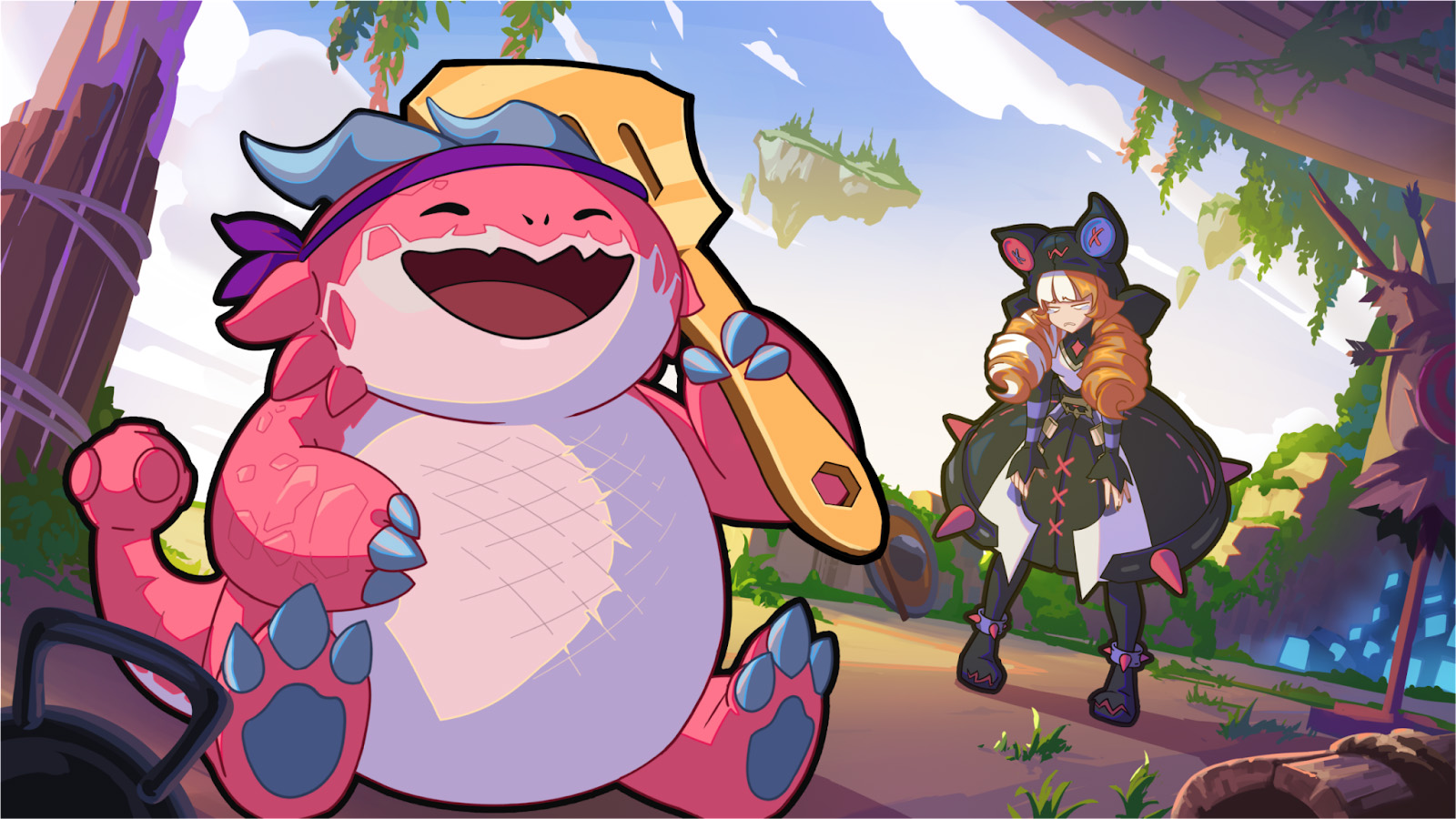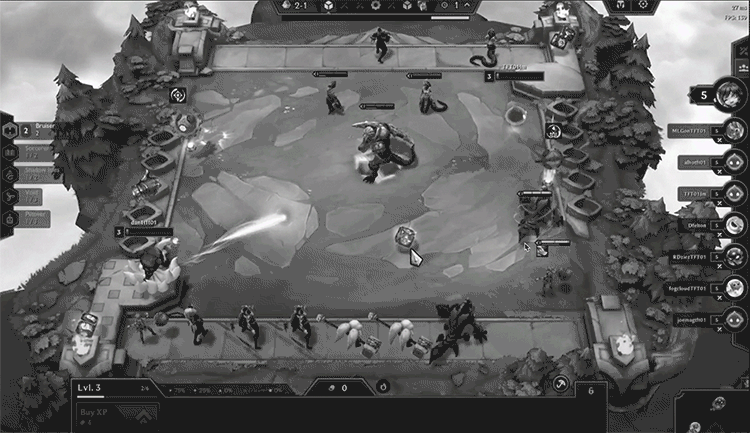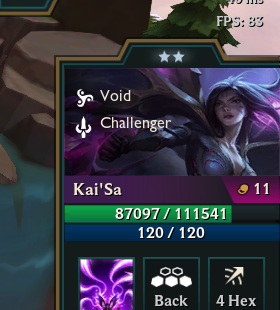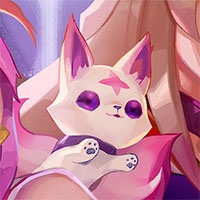

It’s time for your training arc.
In standard Teamfight Tactics, your health is your most vital resource. Whether you’re risking it all with Cursed Crown or embracing the reroll to keep it 100, your game lives and dies by your health bar.
But that was then. Soul Brawl is now. The newest event mode turns some of TFT’s core concepts on their heads by entering you and seven other players into the Soul Brawl tournament.
Soul Brawl is only the events team’s second mode following Fortune’s Favor at the start of this year, but we’re hoping it packs a punch. Let’s dig into what you can expect in Soul Brawl, how the team creates a new event mode, and how they’re thinking about temporary modes to come.
Ready…FIGHT!
Soul Brawl is an eight-player free for all mode that’s split into two parts: training phase and tournament phase. This is your shonen training arc—you’ll have some time to safely power up and train, culminating in a tournament-style brawl with your fellow tacticians.
Throughout the training phase, instead of losing health or taking another player’s health, you’ll be gaining Soul Power. If you lose, you get a little. If you win, you get a lot.
Four times over the course of your training, your Soul Power will be assessed and you’ll be given an armory to choose items from. The more Soul Power you have, the more choices you'll get. But even if you’re ahead, you still might not get exactly what you want.
And of course, every fighter needs a coach. “I remember early on saying we're basically trolling if we don't use the Soul Fighter skin line somehow in here. They have to be part of this event,” says game designer Michael “AfternoonTyphoon” Scipione.
During training phase, instead of fighting krugs or murk wolves during PVE rounds, you’ll be sparring with your coaches, Sett and Gwen. You’re not here to kill them, just to make them tap out.
Also unique to this mode is the Soul Crown item given to each player before the first PVP match. When you use your Soul Crown on a unit, they’ll get some stats and it increases the trait contribution of the last listed (non-unique) trait of a unit by one. Sorry, but you won’t be pulling any 5-cost unique trait shenanigans in this mode.
The Soul Crown will be training alongside you throughout the game. When the tournament phase hits, your Soul Crown has become its ultimate form, having completed its training. Now, it provides more stats and unlocks a new effect: the wearer of the Soul Crown will revive the first time they die in combat and come back to life with health equal to double your amount of Soul Power.
The tournament phase is when the real fights begin. Since there’s no health, everyone will make it to the tournament phase, where you’ll fight an opponent in a best of three. Even if you lose one of three, you’ll always get a second shot at a big brain play.
“In normal TFT we literally have rules so that you don't play the same person twice in a row. In Soul Brawl you specifically do play the same person twice in a row,” says TFT Product Lead Travis “Riot Dovagedys” Boese. “You only have a short window to make changes and try to figure it out, but it's a new puzzle to get that salty runback.”
After each hard-fought best of three, the losers will be knocked out of the tournament and the winners will move on. May the best Choncc win.
A Mode for the Moment
But let’s go back to the beginning, when the events team was starting to explore options for their next mode. Coming off the heels of Fortune’s Favor, they knew they had Cho-sized shoes to fill.
“A large percentage of players were playing Fortune’s Favor. And it wasn't like it came out and they played for two days. Consistently for that month, there was a large group that was only playing Fortune’s Favor or would go back to play it often,” says AfternoonTyphoon.
Fortune’s Favor’s success showed the events team that players have an appetite for new game experiences within TFT. And for now, it’s full steam ahead on creating more unique event modes.
These modes are ephemeral by design—and highly specific to a moment in time. For Fortune’s Favor, that moment was Lunar Gala. For Soul Brawl, that moment is Soul Fighter.
So what comes first: the thematic or the mode? In the case of Fortune’s Favor and Soul Brawl, the thematic was the inspiration behind the gameplay. Fortune’s Favor was the fun, celebratory game mode for Lunar New Year, packed with nonstop items and gold. Was it balanced? Perhaps not entirely… but it sure was fun.
For Soul Brawl, the Soul Fighter thematic provided the springiest of springboards to jump off. But TFT’s not even remotely close to a fighting game. (Unless you hang out on my board for too long. Then I’m throwing hands. And by hands I mean caution pings.) So the team wanted to come up with a way to incorporate the Soul Fighter theme into Teamfight Tactics, while also keeping it uniquely TFT, and different from all of the other things Riot is doing for Soul Fighter.
Being tied to a temporary moment in time also opens up the design space for event-based modes; the team has the opportunity to try things out that they wouldn’t be able to try in standard TFT.
For Soul Brawl, the team’s biggest aspiration was to create a new win condition within TFT. Instead of player health, Soul Brawl’s tournament phase determines who ends up on top.
“That's something that a mode can uniquely explore that standard TFT can't. It would be really hard for us to come out with a new set and be like ‘Hey, it's Gizmos & Gadgets, and health is GONE.’ It’s insanely risky to do because you're basically putting the entire game on the hook right there.” says AfternoonTyphoon. “But in a mode that doesn't live forever, you can experiment.”
So the team kicked off the design process with three broad goals in mind: showcasing the Soul Fighter aesthetic, creating an alternate win condition, and making the experience replayable and appealing for players at all skill levels.
But even with three distinct objectives, starting to design a new mode is a complicated process.
Shaping Soul Brawl
In the very early stages of mode design, systems design lead Jake “Riot Lucky Seat” Street says getting a bunch of people from varying disciplines to brainstorm together is key to kicking things off. One of Riot’s core truths is that a good idea can come from anywhere.
“In the early phases, it's super important to have a lot of voices in the room because it's so easy to think something’s a great idea, but you haven't talked to anyone else about it. But then someone else looks at it from a different angle and is like ‘Have you thought about this, this, and this?’” says Riot Lucky Seat.
During the ideation phase, all of the work is being done on paper. It’s expensive to prototype in TFT, so most of the early design process is done in a design document, brainstorming pie-in-the-sky ideas and envisioning what they might look like in the game. This included everything from custom UI and metagame tweaks to figuring out how to best bring in around-game content like chibis and Soul Fighter skins.
With a massive design document in hand (6,281 words, to be precise) the team then has to whittle all of it down to something both exciting and technically feasible. This is the point when they locked in on design pillars like training phase and tournament phase, Soul Power, and the Soul Crown.
“UX uses some of their magic to show us what our ideas could look like in the game,” says Riot Lucky Seat. “Then we try and squint really hard at that and see what would that be like to play, what might the issues be, how hard would that be to build, and then eventually set up a prototype.”

But once the prototype is built and you start the long process of playtesting and iterating, how do you know when the game is actually fun? As a game designer, you need to be a tad more specific to figure that out.
“When I was working on Starcraft 2, the head of balance design told me: when you pitch unit ideas to me, tell it to me without using the words fun or interesting. Because those words don't mean anything universally,” recalls AfternoonTyphoon.
Since “fun” is too broad a concept, the team asked playtesters questions like "what was the most exciting moment for you?" or "what did you think of the tournament phase?" or "did you understand the Soul Crown?" They also asked questions based around the original goals for the mode, like “how different does this feel from standard TFT?” Throughout the feedback process, they tried to get the answers that would most help them iterate on the direction of the mode.
“It's easy to forget how important goals are when you're creating design work, especially big design work like this,” says Riot Lucky Seat. “If you're creating a set, you can iterate on your champions every day. We can't iterate on this mode that fast, so we needed to have really clear ideas of what the mode is and just as importantly what the mode is not.”
“If you try and make a mode to appeal to every single audience you have in your game, you're gonna end up with kind of a brown mush.”
Over the course of playtesting, the team is getting floods of feedback, dealing with bugs, and constantly iterating on the mode.

Modes to Come
Ultimately, TFT’s temporary modes are all about creating new, unexpected ways to play.
“Most players can only play so many games of ranked before they get burnt out. And so we want to try to give them new fun ways to play TFT,” says Riot Dovagedys. “Modes are one part of a bigger plan to make sure we can keep the game exciting and fresh over a four-month time period for each set.”
Modes aren’t necessarily viewed as a testing ground for new features in TFT, but sometimes ideas are just too good to pass up (like Fortune’s Favor’s lesser champion duplicator, for instance.) But they are a place where the TFT team can try new things and figure out what’s really fun for all of you.
As the team looks ahead to future event modes, they’re exploring both making completely new modes and revisiting existing ones. Either way, it’s a never-ending process of discovery and learning what players will love in TFT.
“We don't expect every mode to be as successful as Fortune's Favor,” says Riot Lucky Seat. “But we want to keep exploring and finding those things that players really like, and understand better what a temporary game mode should look like and what place it should have in their enjoyment of TFT.”
On the design side of things, modes are also about challenging the player base with out-of-the-box ideas. After all, it’s kind of in the team’s DNA—TFT itself started out as a wild mode idea for League and is now a fully-fledged game in its own right.
“In modes, it is better to be a flawed memory than perfectly forgotten,” says AfternoonTyphoon.
“As a designer, it's easy to worry too much about challenging your audience when you should really be worried about boring your audience,” adds Riot Lucky Seat. “We are happy to challenge our audience.”


